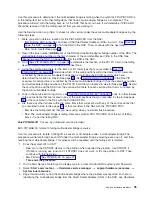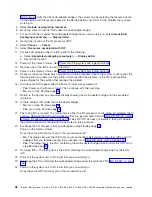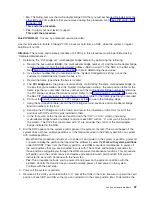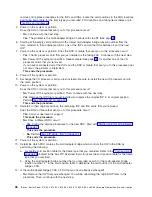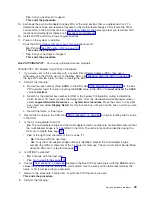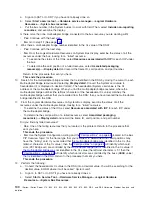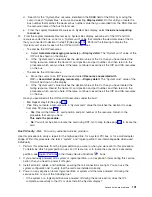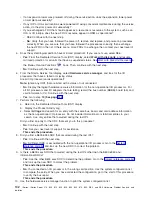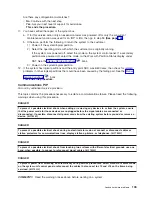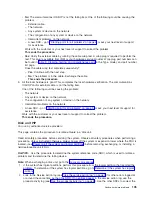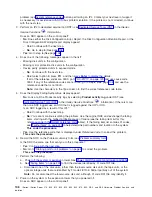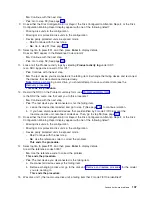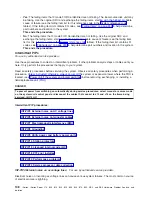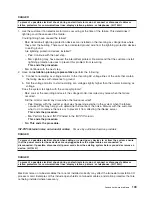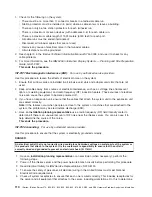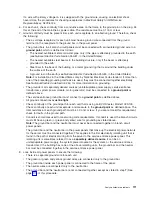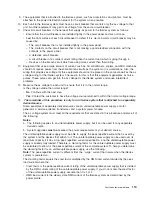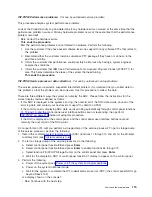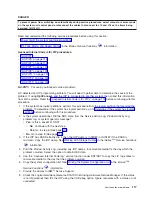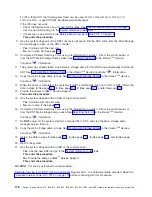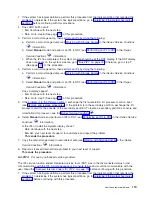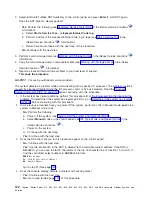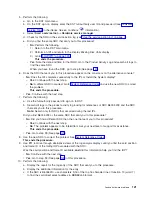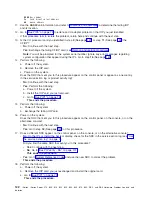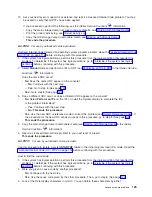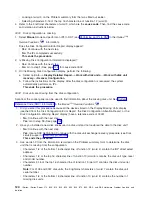
DANGER
To
prevent
a
possible
electrical
shock
during
an
electrical
storm,
do
not
connect
or
disconnect
cables
or
station
protectors
for
communications
lines,
display
stations,
printers,
or
telephones.
(RSFTD003)
1.
Ask
the
customer
if
an
electrical
storm
was
occurring
at
the
time
of
the
failure.
This
determines
if
lightning
could
have
caused
the
failure.
Could
lightning
have
caused
the
failure?
v
Yes
:
Determine
if
lightning
protection
devices
are
installed
on
the
incoming
ac
voltage
lines
where
they
enter
the
building.
There
must
be
a
dedicated
ground
wire
from
the
lightning
protection
devices
to
earth
ground.
Are
lightning
protection
devices
installed?
–
Yes
:
Continue
with
the
next
step.
–
No
:
Lightning
may
have
caused
the
intermittent
problem.
Recommend
that
the
customer
install
lightning
protection
devices
to
prevent
this
problem
from
recurring.
This
ends
the
procedure.
v
No
:
Continue
with
the
next
step.
2.
Have
an
installation
planning
representative
perform
the
following:
a.
Connect
a
recording
ac
voltage
monitor
to
the
incoming
AC
voltage
lines
of
the
units
that
contain
the
failing
devices
with
reference
to
ground.
b.
Set
the
voltage
monitor
to
start
recording
at
a
voltage
slightly
higher
than
the
normal
incoming
ac
voltage.
Does
the
system
fail
again
with
the
same
symptoms?
v
Yes
:
Look
at
the
recording
and
see
if
the
voltage
monitor
recorded
any
noise
when
the
failure
occurred.
Did
the
monitor
record
any
noise
when
the
failure
occurred?
–
Yes
:
Review
with
the
customer
what
was
happening
external
to
the
system
when
the
failure
occurred.
This
may
help
you
to
determine
the
source
of
the
noise.
Discuss
with
the
customer
what
to
do
to
remove
the
noise
or
to
prevent
it
from
affecting
the
iSeries
server.
This
ends
the
procedure.
–
No
:
Perform
the
next
INT-PIP
listed
in
the
INT-PIP
column.
This
ends
the
procedure.
v
No
:
This
ends
the
procedure.
INT-PIP5
External
noise
on
twinaxial
cables:
For
use
by
authorized
service
providers.
DANGER
To
prevent
a
possible
electrical
shock
when
adding
or
removing
any
devices
to
or
from
the
system,
ensure
that
the
power
cords
for
those
devices
are
unplugged
before
the
signal
cables
are
connected
or
disconnected.
If
possible,
disconnect
all
power
cords
from
the
existing
system
before
you
add
or
remove
a
device.
(RSFTD203)
DANGER
To
prevent
a
possible
electrical
shock
during
an
electrical
storm,
do
not
connect
or
disconnect
cables
or
station
protectors
for
communications
lines,
display
stations,
printers,
or
telephones.
(RSFTD003)
Electrical
noise
on
twinaxial
cables
that
are
not
installed
correctly
may
affect
the
twinaxial
workstation
I/O
processor
card.
Examples
of
this
include
open
shields
on
twinaxial
cables,
and
station
protectors
that
are
not
being
installed
where
necessary.
Analyze
hardware
problems
109

